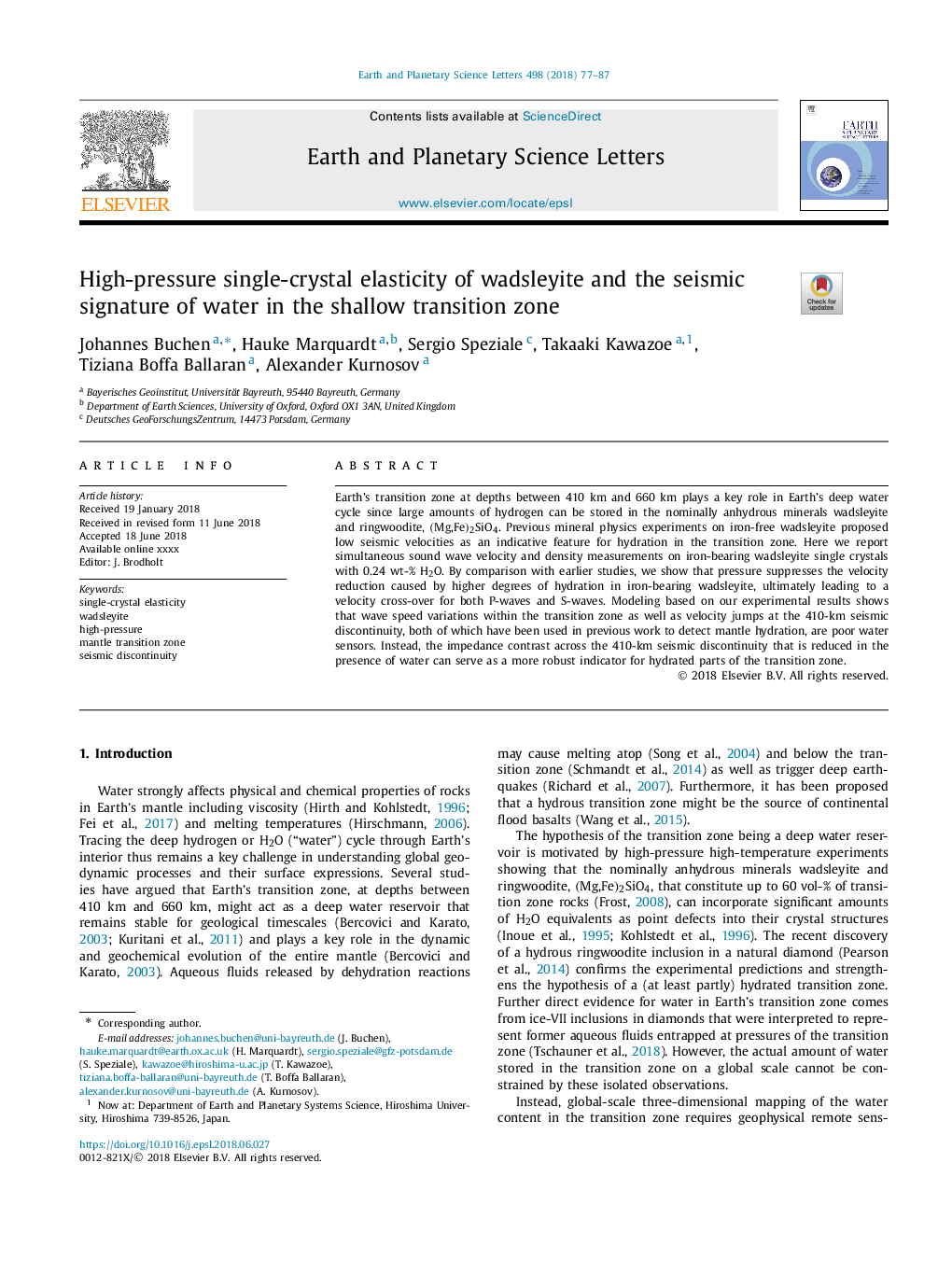| Article ID | Journal | Published Year | Pages | File Type |
|---|---|---|---|---|
| 8906708 | Earth and Planetary Science Letters | 2018 | 11 Pages |
Abstract
Earth's transition zone at depths between 410 km and 660 km plays a key role in Earth's deep water cycle since large amounts of hydrogen can be stored in the nominally anhydrous minerals wadsleyite and ringwoodite, (Mg,Fe)2SiO4. Previous mineral physics experiments on iron-free wadsleyite proposed low seismic velocities as an indicative feature for hydration in the transition zone. Here we report simultaneous sound wave velocity and density measurements on iron-bearing wadsleyite single crystals with 0.24 wt-% H2O. By comparison with earlier studies, we show that pressure suppresses the velocity reduction caused by higher degrees of hydration in iron-bearing wadsleyite, ultimately leading to a velocity cross-over for both P-waves and S-waves. Modeling based on our experimental results shows that wave speed variations within the transition zone as well as velocity jumps at the 410-km seismic discontinuity, both of which have been used in previous work to detect mantle hydration, are poor water sensors. Instead, the impedance contrast across the 410-km seismic discontinuity that is reduced in the presence of water can serve as a more robust indicator for hydrated parts of the transition zone.
Keywords
Related Topics
Physical Sciences and Engineering
Earth and Planetary Sciences
Earth and Planetary Sciences (General)
Authors
Johannes Buchen, Hauke Marquardt, Sergio Speziale, Takaaki Kawazoe, Tiziana Boffa Ballaran, Alexander Kurnosov,
